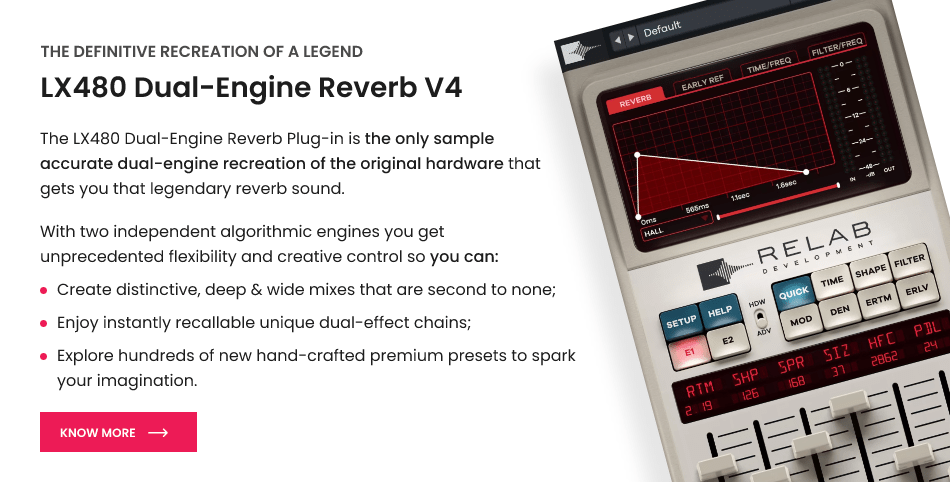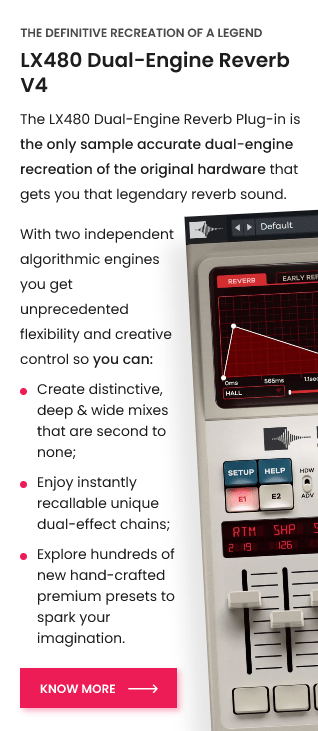If you’ve been experimenting with reverb to elevate your audio productions, you’ve probably encountered the term “early reflections.” Early reflections are a game-changer for those in the know, opening the door to richer, more immersive soundscapes. This article will delve into early reflections and reveal how you can master this technique using the Relab LX480 Dual-Engine reverb plug-in. By the end, you’ll be itching to watch our in-depth video tutorial to perfect your skills.
So, what exactly are early reflections?
The initial reflections reach the listener’s ears from the nearest boundaries, such as walls. Existing within a 30-180 millisecond window, early reflections don’t sound like a diffuse reverb tail. However, they are crucial in adding thickness and localization to the audio, lending depth and dimension to your mix.
The Relab LX480 offers an innovative way to manipulate early reflections, allowing you to create more engaging and realistic audio experiences. In our tutorial, we demonstrate how to use the LX480’s built-in early reflections taps to enhance the sound of an acoustic guitar, resulting in a thicker and wider sound.
But that’s not all.
The LX480 also boasts a robust ambience algorithm to generate early reflection energy in a very unique way, perfect for sound sources recorded in isolation booths or dead rooms that need early reflection energy to tie into longer reverbs.
The ambience algorithm utilizes randomization technology found in the random Hall and random Hall HD algorithms, resulting in a more realistic early reflection pattern. This creates a more difficult sound for our ears to discern than traditional delays, further enhancing the audio’s depth and richness.
Our video tutorial dives deep into the LX480’s settings, demonstrating how to adjust the modulation parameters, such as rate and depth (referred to as spin and wander in the random Hall algorithm). By fine-tuning these settings, you can create a subtle effect that adds dimension to your audio without drawing attention to itself.
Additionally, we’ll show you how to optimize low-frequency energy by adjusting the multiplier for a wider and richer sound. Combining the ambience with the room sound you’ve crafted can result in a more cohesive and spacious audio mix, adding depth without the obviousness of a concert hall effect.
Put simply, early reflections are a valuable tool for audio producers looking to add depth and thickness to their room reverb.
The Relab LX480 reverb plugin makes it easy to harness the power of early reflections, giving you control over the ambience and depth of your mix. Whether working with vocals or instruments, mastering early reflections can elevate your productions, delivering professional and polished results.
Our comprehensive video tutorial below contains tips and tricks for getting the most out of the Relab LX480 and early reflections. By the end of the tutorial, you’ll have the knowledge and skills to create captivating soundscapes that immerse your audience in your audio world.
So, are you ready to unlock the full potential of early reflections in your audio productions? Watch our in-depth video tutorial and become an early reflections expert with the Relab LX480.





